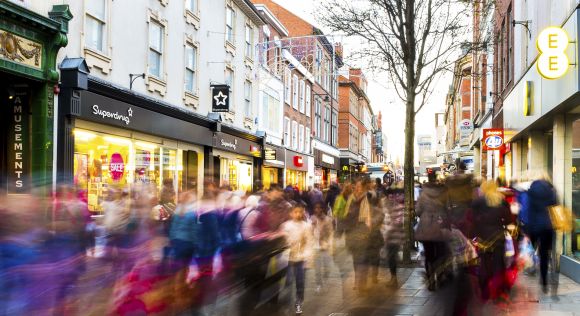Millennials are influencing key market trends, not only in buying power, but also real estate and lifestyle development.
 According to Nielsen’s recent Millennials – Breaking the Myths report, those aged 18-36 are 77 million strong, or 24 percent of the population, and they continue to control an increasing share of the economy. Understanding how their values play into their consumer lifestyle and purchasing habits will be essential to appealing to this generation of consumers.
According to Nielsen’s recent Millennials – Breaking the Myths report, those aged 18-36 are 77 million strong, or 24 percent of the population, and they continue to control an increasing share of the economy. Understanding how their values play into their consumer lifestyle and purchasing habits will be essential to appealing to this generation of consumers.
The “American Dream” ideal is transitioning, as millennials are steering away from the white picket fence in the suburbs to the eclectic urban dwelling in the heart of the city. This shift began about 20 years ago, but dramatically accelerated during the housing bust. A wave of young, educated, relatively high-earning workers are quickly moving to American cities.
A second Nielsen report states that sixty-two percent of millennials indicate they prefer to live in the type of mixed-use communities found in urban centers, where they can be close to shops, restaurants and offices. As a result, for the first time since the 1920s growth in U.S. cities outpaces growth outside of them. According to the Wall Street Journal, Influx of Younger, Wealthier Residents Transforms U.S. Cities, a range of factors are driving the urban influx, from job growth and declining crime in cities to young professionals waiting longer to have children—or deciding not to have them at all. Tighter mortgage lending and concern about homeownership risks also weigh on consumer behavior, turning many young people into long-term renters.
For example, as discussed in the article, let’s take a closer look at Ohio City, a Cleveland neighborhood typically known for its putrefying economy - but young thriving millennials are flocking to the once run-down part of town. The median income has skyrocketed from $23,000 to $93,000 since 2006 and median home values shot up 800% since 2000 to $270,000. Five years ago, city growth planning initiatives focused on tackling a 40% vacancy rate for office and retail space on the main commercial strip. Today, that vacancy rate is below 2%.
By emphasizing diversity in both community design and population, developers can speak directly to the values of millennials combining urban convenience, social consciousness, and creative environments. The key takeaway is that millennials are influencing key market trends, not only in buying power, but also real estate and lifestyle development.
To dig deeper, download the report below where we will explore some of the dominant consumer groups within the millennial generation and how you can maximize the value of millennial-specific insights.


